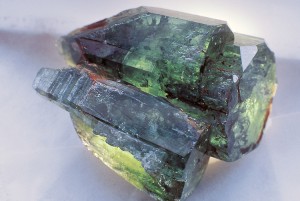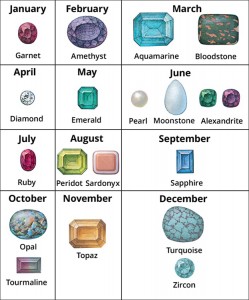May the Fourth Be With You
Thursday, May 4th, 2023

Star Wars: The Force Awakens had the biggest opening weekend in motion-picture box-office history. It opened on Dec. 18,205.
Credit: © Lucasfilm, Ltd.
May 4th has become a day to celebrate Star Wars. Star Wars is one of the most popular and profitable motion pictures in history. Why do we think of Star Wars on the fourth of May? It is because Obi-Wan Kenobi, played by English actor Alec Guinness and later by Scottish actor Ewan McGregor, says, “May the Force be with you” throughout the galaxy. He says it as a wish of goodwill, wishing the positive vibe of the Force onto the people he meets. In the movies, the Force is a positive energy field that binds the universe together. May the Fourth sounds pretty similar to “May the Force!” Sending the force to all of you, readers!

The heroes of Star Wars—Luke Skywalker (played by Mark Hamill), Princess Leia (Carrie Fisher), and Han Solo (Harrison Ford)—first appeared in American cinemas 40 years ago today on May 25, 1977.
Credit: © Lucasfilm Ltd
The first film was released as Star Wars, but the title later was expanded to Star Wars: A New Hope. This science-fiction fantasy, released in 1977, set standards for special effects that revolutionized filmmaking. Directed and written by George Lucas, it was the first in a series of enormously popular movies. It also was the first installment in a trilogy (set of three) that included The Empire Strikes Back (1980) and Return of the Jedi (1983). Lucas supervised all three movies and wrote or helped write the screenplays for them. But he did not direct the two later films.
Star Wars is basically an adventure story about the battle between good and evil. The film is filled with colorful and bizarre characters and breathtaking action sequences. The young hero is Luke Skywalker (played by Mark Hamill). He attempts to defeat the evil Galactic Empire with the aid of a mysterious inner power known as “the Force.”
Many of the characters in the film became world famous. The best known were the robots R2-D2 (Kenny Baker) and C-3PO (Anthony Daniels), the daredevil pilot Han Solo (Harrison Ford), the rebel Princess Leia Organa (Carrie Fisher), the evil Darth Vader (the voice of James Earl Jones), and the mysterious knight Obi-Wan Kenobi (Alec Guinness). Other popular characters included the giant furry warrior Chewbacca (Peter Mayhew), the adventurer Lando Calrissian (Billy Dee Williams), and the wise ancient Jedi master Yoda (the voice of Frank Oz). Music for the films composed by John Williams won international popularity.
The popularity of the original “Star Wars” trilogy launched a huge merchandising program that included toys and books. Many people started hobbies devoted to collecting material related to the three movies.
A prequel (predating) trilogy portrays the early years of key characters in the original trilogy. It consists of the films Star Wars: Episode I—The Phantom Menace (1999), Star Wars: Episode II—Attack of the Clones (2002), and Star Wars: Episode III—Revenge of the Sith (2005). Lucas directed all three films. A sequel (postdating) trilogy includes the films Star Wars: The Force Awakens (2015), Star Wars: The Last Jedi (2017), and Star Wars: The Rise of Skywalker (2019). It is set after the events of the original trilogy. Other “Star Wars” movies include Rogue One: A Star Wars Story (2016) and Solo: A Star Wars Story (2018).






